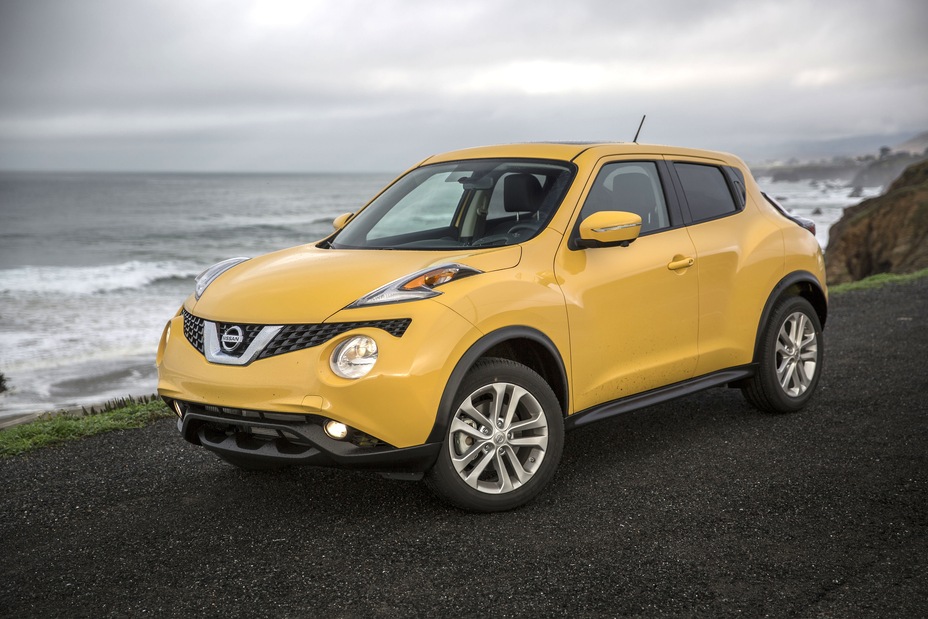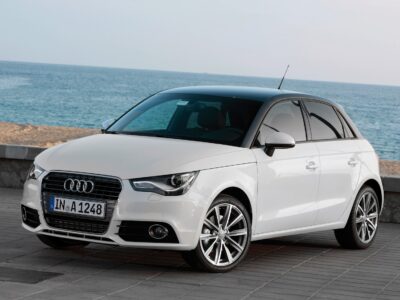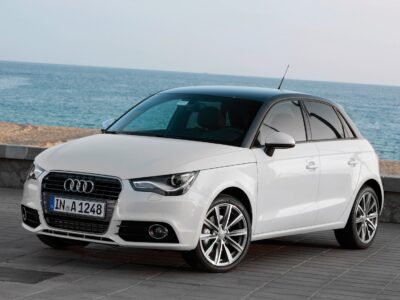
Nissan Juke Engine Light: Meaning, Causes, and Fixes

When the engine warning light appears on your Nissan Juke, it’s more than just an annoying dashboard icon — it’s your car’s way of signaling that something isn’t right. Whether it’s a minor sensor glitch or a serious engine malfunction, ignoring this alert can lead to expensive repairs and poor performance. In this guide, we’ll explore everything you need to know about the Nissan Juke check engine light, including common causes, how to diagnose the issue, and steps to reset it safely.
- Understanding the Engine Light on the Nissan Juke
- Common Causes of the Nissan Juke Check Engine Light
- Severity Levels of the Engine Warning Light
- Diagnosing the Check Engine Light on a Nissan Juke
- Resetting the Engine Light on a Nissan Juke
- When to Stop Driving Your Nissan Juke
- Preventive Tips to Avoid Engine Light Problems
- Frequently Reported Nissan Juke Engine Light Issues
- Expert Tip
- Conclusion
- FAQs
Understanding the Engine Light on the Nissan Juke
The check engine light (CEL), also known as the malfunction indicator lamp (MIL), is part of the vehicle’s electronic control system. The Engine Control Unit (ECU) constantly monitors critical systems such as:
- Fuel injection
- Ignition timing
- Exhaust emissions
- Airflow and oxygen sensors
- Electrical circuits
If the ECU detects an irregularity outside of its normal range, it triggers the engine light to alert the driver. Depending on the severity, the light may appear as:
- Solid amber/yellow: A minor or moderate issue that should be inspected soon.
- Flashing light: A serious problem that requires immediate attention — stop driving.
Common Causes of the Nissan Juke Check Engine Light
While the light can be caused by hundreds of possible faults, several issues frequently appear in Nissan Juke models, especially from 2011 to 2019.
1. Faulty Oxygen (O₂) Sensor
The oxygen sensor measures the amount of oxygen in the exhaust gases. A failing sensor can cause:
- Poor fuel economy
- Rough idling
- Failed emissions test
If ignored, it can damage the catalytic converter, costing significantly more to replace.
2. Loose or Damaged Fuel Cap
One of the simplest but most common causes — a loose or cracked fuel cap can trigger the light. It allows fuel vapors to escape, affecting the car’s emission system. Simply tighten or replace the cap and drive for a few cycles to see if the light clears.
3. Malfunctioning Mass Air Flow (MAF) Sensor
The MAF sensor calculates the air entering the engine for the ECU to adjust the air-fuel ratio. Symptoms of a failing MAF include:
- Sluggish acceleration
- Rough engine idle
- Decreased fuel efficiency
- Difficulty starting
4. Ignition Coil or Spark Plug Issues
Misfires due to worn-out spark plugs or faulty ignition coils can illuminate the engine light. You might notice vibration, poor acceleration, or higher fuel use. Replace spark plugs every 30,000–60,000 miles and coils as needed.
5. Catalytic Converter Failure
A failing catalytic converter can trigger a persistent engine light. Symptoms include:
You may be interested in reading Nissan Juke Hybrid Problems: What Every Owner Should Know
Nissan Juke Hybrid Problems: What Every Owner Should Know- Sulfur or “rotten egg” smell
- Reduced power and acceleration
- Poor fuel efficiency
This repair can be costly, so early diagnosis is key to preventing total failure.
6. Faulty EGR Valve (Exhaust Gas Recirculation)
The EGR valve helps reduce emissions by recirculating part of the exhaust gas back into the engine. When it malfunctions, you may experience:
- Knocking sounds
- Increased fuel use
- Rough idling
7. Battery or Alternator Problems
Low voltage or charging issues can affect the ECU’s ability to read sensor data accurately. A weak battery may trigger the light along with other warning indicators.
Severity Levels of the Engine Warning Light
| Light Behavior | Meaning | Action Required |
|---|---|---|
| Flashing | Serious issue (e.g., misfire or catalytic converter risk) | Stop immediately and seek service |
| Steady On | Non-critical issue | Schedule a diagnostic scan soon |
| Comes On then Off | Temporary fault or resolved issue | Monitor for recurrence |
Diagnosing the Check Engine Light on a Nissan Juke
Before rushing to the mechanic, you can perform basic troubleshooting to identify the fault.
Step 1: Use an OBD-II Scanner
Plug an OBD-II diagnostic scanner into the port beneath the steering wheel. The tool retrieves error codes such as P0130 (Oxygen Sensor) or P0101 (MAF Sensor).
Step 2: Interpret the Codes
Each code corresponds to a specific issue. You can look up Nissan-specific codes online or in your Juke’s service manual.
Step 3: Fix or Replace the Faulty Component
Some issues, like replacing a gas cap or cleaning the MAF sensor, are DIY-friendly. Others, such as catalytic converter or wiring problems, require professional inspection.
Resetting the Engine Light on a Nissan Juke
After fixing the issue, the check engine light can be reset in two ways:
Option 1: Automatic Reset
Drive normally for a few cycles. If the issue is resolved, the ECU will clear the code automatically.
Option 2: Manual Reset
You can manually clear the code with an OBD-II scanner:
You may be interested in reading Nissan Juke Hybrid Problems: What Every Owner Should Know
Nissan Juke Hybrid Problems: What Every Owner Should Know Nissan Juke Won’t Start: Common Causes and Expert Fixes
Nissan Juke Won’t Start: Common Causes and Expert Fixes- Turn off the ignition.
- Connect the scanner.
- Erase stored codes from the ECU.
- Restart the car and confirm the light is off.
⚠️ Note: Resetting without fixing the root cause will make the light reappear.
When to Stop Driving Your Nissan Juke
You should stop immediately if:
- The engine light flashes continuously.
- There’s a loss of power or unusual noises.
- You smell burning or sulfur from the exhaust.
Driving under these conditions can cause irreversible engine damage or catalytic converter failure.
Preventive Tips to Avoid Engine Light Problems
- Use high-quality fuel and engine oil.
- Replace air filters and spark plugs on schedule.
- Keep the fuel cap tightly sealed.
- Perform a routine diagnostic scan every few months.
- Service your Nissan Juke at regular intervals.
Frequently Reported Nissan Juke Engine Light Issues
| Model Year | Common Problem | Typical Cause |
|---|---|---|
| 2011–2013 | Rough idle, high fuel consumption | MAF sensor or O₂ sensor failure |
| 2014–2016 | Hesitation on acceleration | Ignition coil misfire |
| 2017–2019 | Engine noise and low power | Turbo hose leak or boost pressure sensor |
Expert Tip
If your Nissan Juke’s engine light persists after replacing components, there may be hidden wiring issues or ECU calibration errors. Have a Nissan-certified mechanic perform a deep diagnostic test to read live data and freeze-frame records.
Conclusion
The Nissan Juke check engine light isn’t just a minor inconvenience — it’s a valuable diagnostic tool that helps protect your engine from damage. Understanding what triggers it, how to interpret its signals, and how to respond quickly can save you time, money, and frustration. Keep your Nissan Juke in top shape by addressing warnings promptly and maintaining consistent servicing habits.
FAQs
1. Can I drive with the engine light on in my Nissan Juke?
Yes, if the light is steady and the vehicle drives normally. But if it’s flashing, stop immediately.
2. How do I know what caused my check engine light?
Use an OBD-II scanner to read the fault codes and identify the exact component involved.
3. Can a loose gas cap trigger the check engine light?
Absolutely. It’s one of the most common causes and the easiest to fix.
4. How long does it take for the light to reset after a repair?
It may take 3–5 drive cycles for the ECU to confirm the issue is resolved.
5. How much does it cost to fix the check engine light on a Nissan Juke?
Costs vary: a simple sensor replacement may cost $50–$200, while catalytic converter issues can exceed $1,000.
 Nissan Juke Hybrid Problems: What Every Owner Should Know
Nissan Juke Hybrid Problems: What Every Owner Should Know Nissan Juke Won’t Start: Common Causes and Expert Fixes
Nissan Juke Won’t Start: Common Causes and Expert Fixes Nissan Juke Engine Malfunction Service Now – Complete Fix Guide
Nissan Juke Engine Malfunction Service Now – Complete Fix GuideIf you want to know other articles similar to Nissan Juke Engine Light: Meaning, Causes, and Fixes you can visit the category Common Problems.
Deja una respuesta






More content of your interest